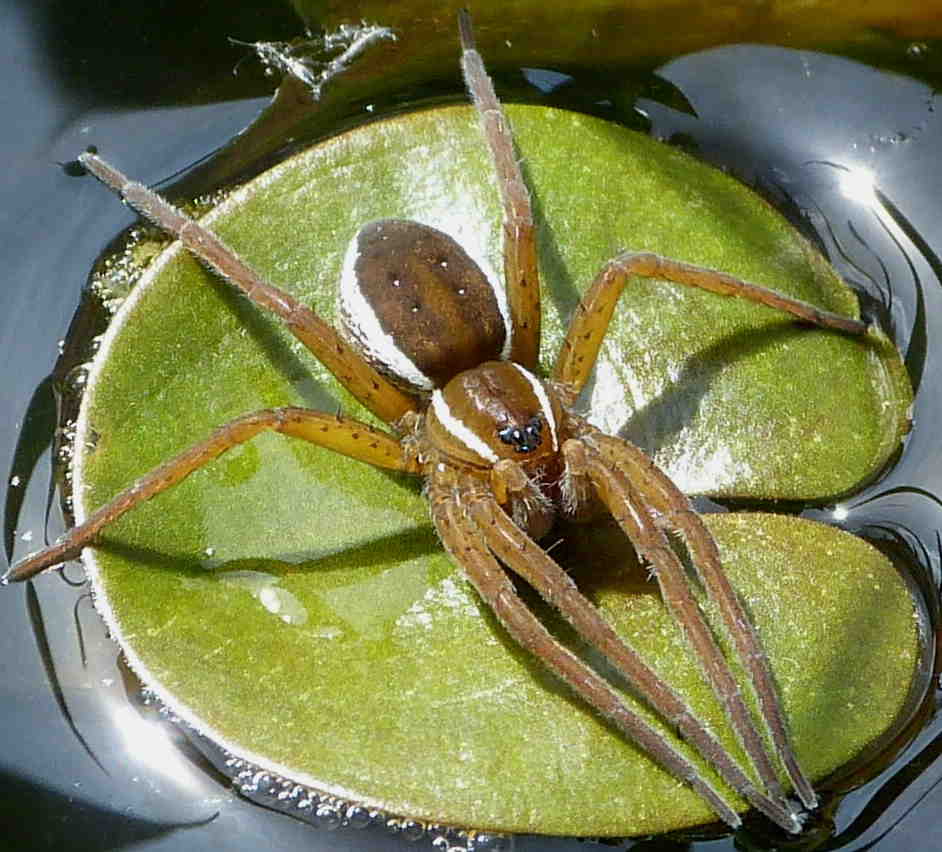Dolomedes plantarius has a wide range, extending from northern Spain north to Scandinavia, and from Britain east to European Russia, and beyond to southern Siberia and Kazakhstan. The Spiders of Europe website can be used to contrast this range with that of D. fimbriatus. The European ranges of the two species are not dissimilar but D. fimbriatus extends much further east into Central Asia and Japan.
With the likely exception of most northern part of its range, D. plantarius populations are mostly small and fragmented as a result of wide-scale loss and degradation of wetlands. The species is classified as Vulnerable to extinction on the IUCN's Global Red List (World Conservation Monitoring Centre, 1996) although this assessment pre-dates publication of the current IUCN standards (version 3.1, 2001) and is due for re-evaluation. A recent revaluation using current standards, and in the light of modelling future climate change scenarios, suggests that the species will remain threatened, with Vulnerable still the most appropriate category (Milano et al. 2022).
Because of its rarity and continuing threats to its habitat, the species is either Red Listed or given legal protection, or both, in many European countries (Milano et al. 2021 - see also Conservation Status).
References
Milano, F., Blick, T., Cardoso, P., Chatzaki, M., Fukushima, C. S., Gajdoš, P., Gibbons, A. T., Henriques, S., Macias-Hernandez, N., Mammola, S., Nentwig, W., Nolan, M., Pétillon, J., Polchaninova, N., Řezáč, M., Sandstrom, J., Smith, H., Wiśniewski, K., & Isaia, M. 2021. Spider conservation in Europe: a review. Biological Conservation 256, [109020]. https://doi.org/10.1016/j.biocon.2021.109020
Milano, F, Cardoso, P, Mammolo, S ., Smith, H. & Isaia, M. 2022. Trends in habitat suitability and conservation status of aquatic spiders in Europe. Biological Conservation 275. https://doi.org/10.1016/j.biocon.2022.109767
